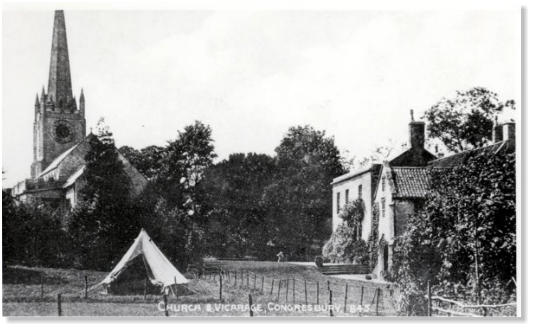
CONGRESBURY HISTORY GROUP
Saint Congar and the Church
Cadbury Hill fort could have been
associated with the site of a Christian
monastery founded by Saint Congar.
The village is named after this saint
who possibly was a Welsh
missionary in the 6th century.
He is said to have performed a series
of miracles in the village one of which
involved his “walking stick” in the
churchyard. The remnants of this
dead yew, badly vandalised in 1998,
are a reminder of the story of how
Congar wished for a tree to provide
shade from the summer heat. He
thrust his yew staff into the ground
and next day it put forth leaves and
afterwards grew into a wide
spreading tree.
In 1995 an amazing discovery of
several pieces of early carved stone
added further to our saints history.
Professor Michael Costen has
suggested that the carvings date
from between 1033 and 1060 and
formed part of the shrine of Saint
Congar. The carvings illustrated here
can be viewed in Taunton Museum.








Top: Christ
Below: This could part of the statue
of Saint Congar
Left: St Congar’s “walking stick”
Clearly our current church, consecrated in 1215 and seen in this early post card
(below), was not the first building on this site.
The church is now dedicated to St Andrew and is well worth a visit to view the number
and variety of its carved heads
































